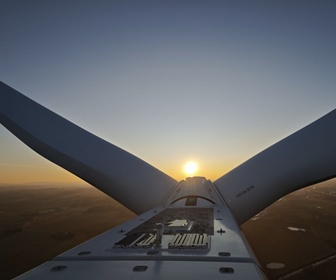New studies leveraging conceptual designs of offshore wind turbines point to how their drivetrains could change in the near future to produce more power while lowering costs, according to research by the U.S. Department of Energy’s National Renewable Energy Laboratory (NREL) and General Electric Research.
To determine the optimal designs for more powerful turbines, the researchers conceptually designed three drivetrain technologies at five different powers ranging from 15 megawatts to 25 megawatts for both fixed-bottom and floating foundations. The use of software developed at NREL called the Wind Plant Integrated Systems Design and Engineering Model (WISDEM) allowed the researchers to create 30 unique design points.
The design with the lowest levelized cost of energy (LCOE) coupled a medium-speed gearbox to a permanent-magnet synchronous generator (MS-PMSG). The LCOE for this technology is estimated to be as much as 7% lower for both fixed-bottom and floating designs compared to a more common direct-drive configuration, provided the gearbox does not significantly increase maintenance costs. The analysis assumes that maintenance costs are identical across drivetrain-generator technologies and constant across the different power ratings, but LCOE is quite sensitive to maintenance costs. Between the PMSG and superconducting direct-drive solutions, the latter generated LCOE savings ranging between 2% and 5% depending on the rating. Superconducting generators were more beneficial in floating wind turbines than in fixed-bottom ones.








